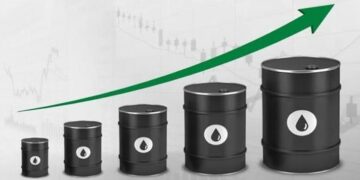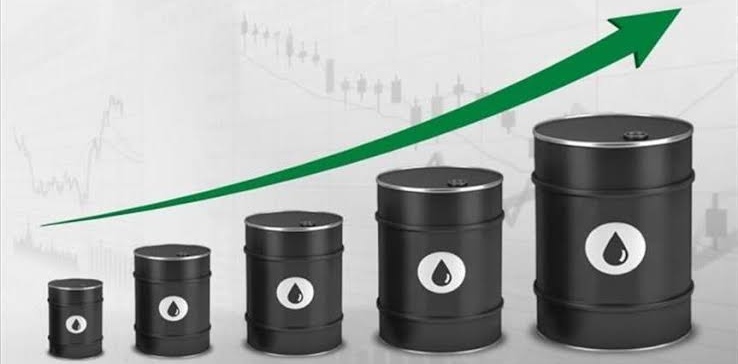By John Ikani
Crude oil prices saw a significant increase on Monday due to a combination of halted oil production in Libya and growing tensions in the Middle East.
West Texas Intermediate experienced a rise of up to 3%, reaching over $77 per barrel, while Brent crude oil, the international benchmark, increased more than 2%, surpassing the $80 per barrel mark.
Israel’s airstrike on Hezbollah’s rocket launch sites in Lebanon over the weekend has heightened concerns of a larger conflict involving Iran in the region.
“The rise in tensions could bring an Iranian military response which, if seen, could slow global oil movements,” stated Dennis Kissler, senior vice president at BOK Financial, in a recent note to clients.
Iran-backed Houthi rebels have persisted in their attacks on Red Sea vessels as a demonstration against the Israel-Hamas conflict. A Greek oil tanker caught fire over the weekend after being targeted last week.
Libya’s eastern government also announced a temporary halt to its oil production and exports due to a disagreement over the leadership of Libya’s central bank, further contributing to the price increase. IEA data reveals that Libya produced over 1 million barrels of crude oil daily last month.
“We’ve got demand fears, and those are really entrenched in the markets right now,” shared Bob Iaccino, co-founder and chief market strategist at Path Trading Partners, with Yahoo Finance.
Oil prices have climbed more than 5% over the past three trading days.
However, US gasoline prices have been steadily decreasing from their peak in August.
The national average for gasoline is around $3.35 per gallon, showing a decline of $0.16 from a month ago and $0.47 less than a year ago, as per AAA data.
“The trading world is not willing to chase gasoline higher, particularly since hurricane season will spare US Gulf in August and cooling of the Atlantic might diminish chances of any tropical development in September or October,” Tom Kloza, global head of energy analysis at OPIS, told Yahoo Finance on Monday.
Kloza pointed out that US gasoline demand typically decreases by 5%-6%, approximately 400,000 barrels per day, right after Labor Day. The oil market might also need to handle increased supply if OPEC+ proceeds with its plan to introduce more crude supply into the global market.
“The increases [in oil prices] Thursday, Friday, and today probably ‘arrest’ the slow-motion slide that was taking place for retail gasoline, but we are not seeing enough strength to inspire a meaningful rally,” commented Kloza.
“I still believe that we are looking at a fourth quarter in the US that will bring about the lowest pump prices for gasoline since 2021.”




































